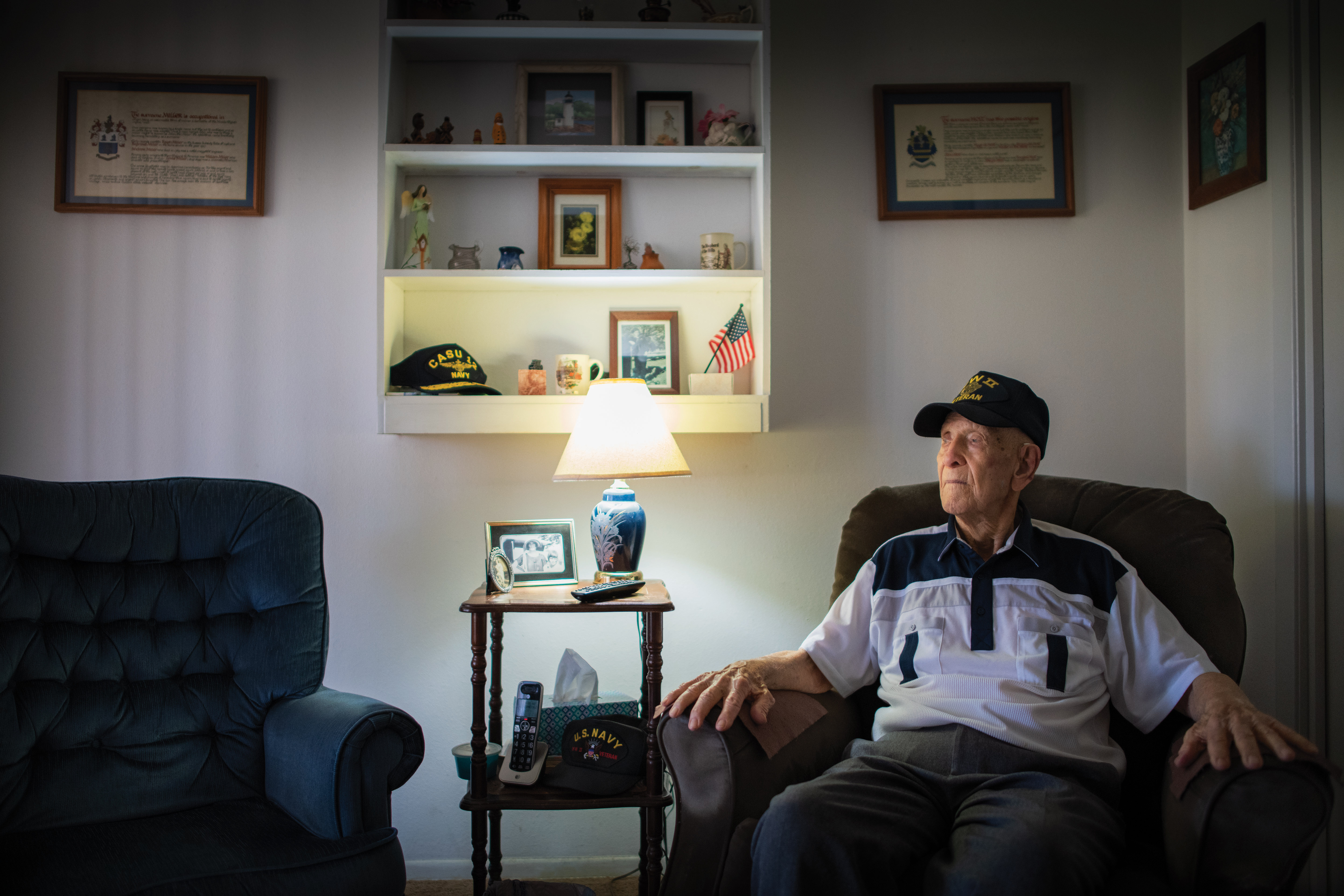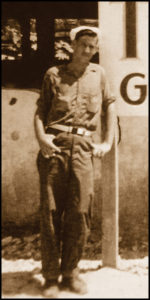
Ed Holt
Aircraft repairman on Guam
Ed Holt
Seaman First Class, U.S. Navy
1944-1946

cS1/c Ed Holt
Guam, 1946
There were probably several thousand Japanese still living in the jungle. We had to stand guard duty at night. They were raiding the planes for the tires and cutting them for shoes.
I was born in 1925 in Broken Bow, Oklahoma and grew up on a farm. My dad grew cotton until the Dust Bowl. After that we farmed peanuts. We farmed every year until I went into the Navy. I graduated from high school in 1944, and four days later they called us up. After boot camp at Camp Wallace, Texas, we went to Port Hueneme, California for advanced amphib training. Then we got called to the Pacific and boarded a ship headed to Guam. I stood guard duty on the ship. With the rough weather, I had to hold onto the poles to keep from being washed overboard.
When we got to Guam in September, 1944 there was nothing there; no buildings left standing. We worked night and day with no lights. We were in blackout all the time I was there. The desalinization plant was blown up, so they took seawater and doctored it up. We’d take the lemon cube from the K-rations and put it in a canteen to be able to drink the water.
We were in Guam for 17 months and supplied 90% of the aircraft for the 3rd and 5th Fleet. We de-preserved, test-flew and commissioned combat service aircraft and sent them to the carriers. Sometimes the ships would bring their planes in all beat up and get new aircraft. I was an AMM—aviation machinist’s mate striker. We did anything the mechanics needed. Sometimes they let us go up with the pilot to test-fly the planes. I went up on a torpedo bomber twice. There were probably several thousand Japanese still living in the jungle. We had to stand guard duty at night. They were raiding the planes for the tires and cutting them for shoes. They also cut the lines.
There was a couple who owned a Chevrolet dealership before the Japanese took over. They were living in a lean-to with nothing but whatever they could find. This local guy who worked for our outfit invited us to visit his family. There was nothing on the island and they couldn’t buy clothes. He had a teenage son and daughter. I wrote home and told my sister to send a dress. When it arrived, I got a picture with her in that dress. Her name was Sylvia. Fifty years later, a friend took that picture to Guam. Sylvia had died but they visited her daughter and showed her the pictures. She said her mother gave her that dress and told her to keep it because it had been given to her by a sailor in WWII.
My best day in the Navy was graduation from boot camp, July 4, 1944. We had a dress parade and we were sharp in full dress whites. When the 3rd Marine Division went to Iwo Jima, they bivouacked at our camp. I ran into a Navy corpsman attached to the 3rd Marine Division from my hometown. His dad owned the drugstore.
I was discharged in March, 1946 as a seaman first class. When I left home, Dad couldn’t farm by himself. They sold out in 1945 and moved to Aransas. I came to Texas and worked at the carbon plant for over two years on the oil lines. Then I worked for Alcoa. I was a charter member and charter president of that Local and did national negotiations in Pittsburgh with the Steelworkers’ Union. We moved to Ingleside and I worked at the Sherwin Alumina plant for 35 years. I retired at 63 and went to work for Walmart and represented the store at the stockholders’ meeting in Bentonville, Arkansas. My wife and I were married 67 years and traveled a lot. {02-13-2020 • Ingleside, TX}